I just thought I would cross post these captures here in the PicoScope forum from the Technical Duscussion area so those who are not members here yet could have the opportunity to see the kind of performance possible with PicoScope on some modern drive by wire signals.
Victim: 2006 Chevy Cobalt 2.2 Vin F.
Brief system description:
The gas pedal is an Accelerator Pedal Position Sensor (APP) which serves as a throttle request from the driver to the ECM. The ECM then controls the throttle plate position with a reversing electric motor in the Throttle Body Assembly. The throttle plate is spring loaded and has a neutral 'rest position'. The motor must pull against the spring to close or open the throttle plate from this position. Feedback about throttle plate position is provided to the ECM by two Throttle Position Sensors (TPS) which work with opposing voltage outputs.
We are going to focus on the TB assembly signals.
In the following captures the channels are:
A: TPS1 (voltage falls when throttle plate opens)
B: TPS2 (voltage rises when throttle plate opens)
C: TAC Close (voltage on close side of TAC motor)
D: TAC current (probe is oriented so that positive current is a close effort and negative current is an open effort)
The captures in this post were done with a PicoScope 3423 running 6.0.6 software. We are collecting samples at 1MHz per channel on each of four channels with two second screens. It would be impossible to duplicate these captures with any other automotive scope. The TAC control is modulated at 10KHz! So, we are looking at signals with widely different frequencies with all of the detail available. The data files are enormous. One is 120Mb. A single screen is 6-10Mb. So, we will just do some images.
The first image is on key up. Note how the ECM closed the throttle plate to check the min TPS value then finds it's 'happy place'.
The second image is a snap throttle capture with the engine running.
Note that the motor modulation is reflected in the TPS signals as the TPS picks up the RFI from the motor action. Also note the digital pulses on TPS2.


In the following images, we have exchanged the Channel A TPS1 for the TAC Open side of the motor to show more of the motor control strategy. Again, the first one is a key up sequence and the second is a snap throttle with engine running. Note how the voltage is applied to one side of the motor and modulated on the other side to achieve the desired position.
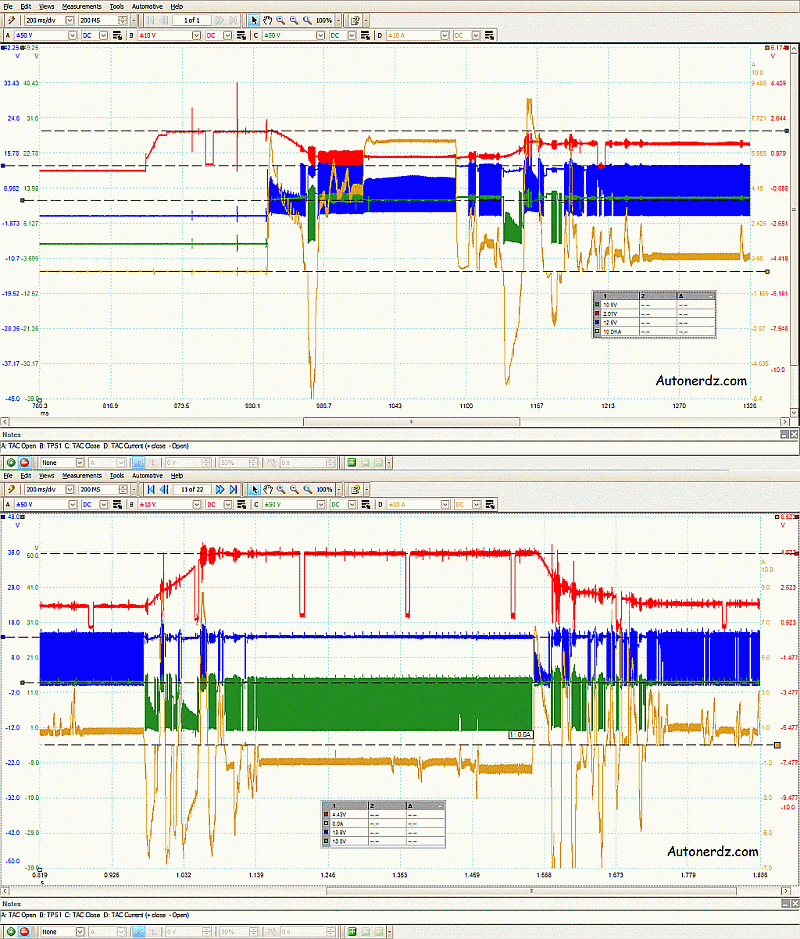
Here is one more image set below. The first one is a capture after the key has been shut off and the TAC system is doing it's self test and pulling the plate closed to again check the minimum throttle value. Then the motor control shuts down and the throttle plate spring opens the plate to the 'rest' position.
The second one is several seconds later when the TPS2 circuit finally powers down.
The third one is a mega zoom in on the TAC motor control modulation as the plate is pulled closed. Note the TAC Close voltage is high and the TAC Open voltage is modulating. The TAC current is a positive value average indicating the effort to close. This current modulates with the TAC open signal, rising when the voltage is low (from TAC Close side voltage) and falling when voltage is high (opposing TAC Close voltage).
The time cursors frame one modulation signal cycle at 100us. This is 10,000 Hz!! You could not make this capture time and still be able to zoom in to see this detail with any other automotive scope. That is because the samples are only one microsecond apart for two million samples per channel during the two second screen capture. This kind of scope performance is unprecedented in our industry.
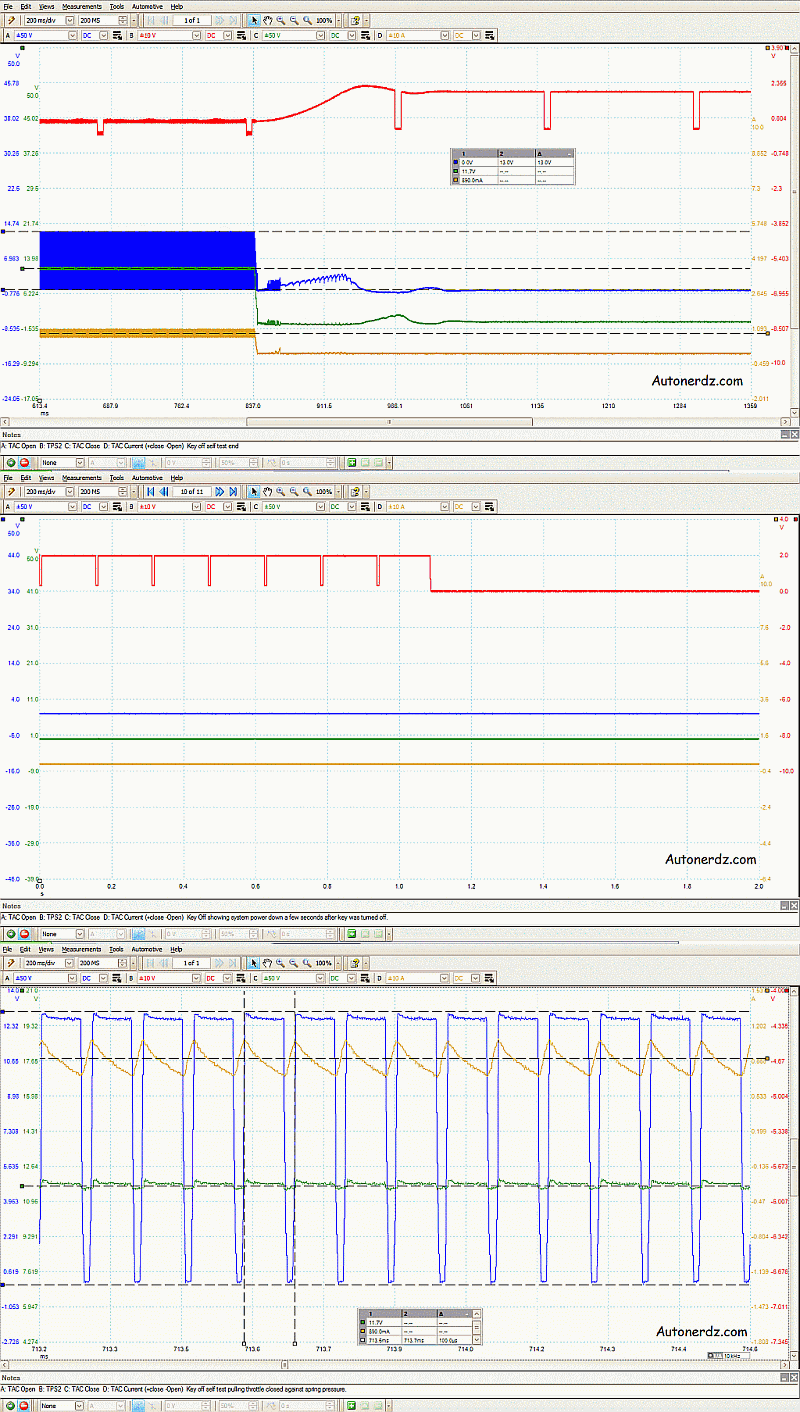
To illustrate the zoom power I have made some boxes to frame the area we are progressively zooming in on in the following images from one of the above captures:
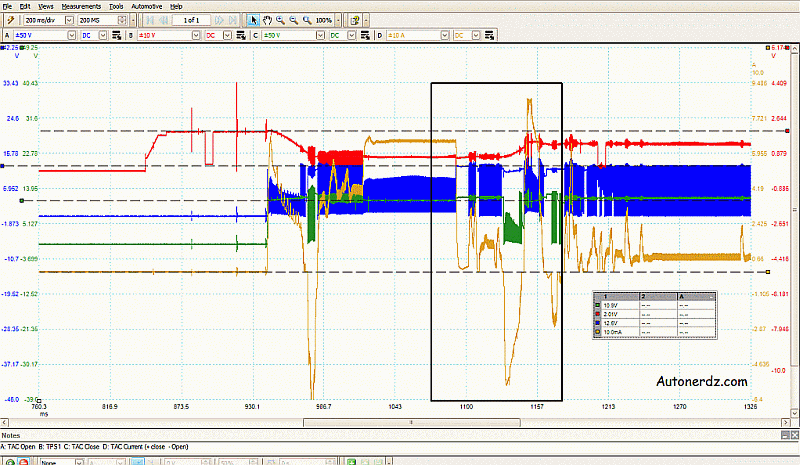
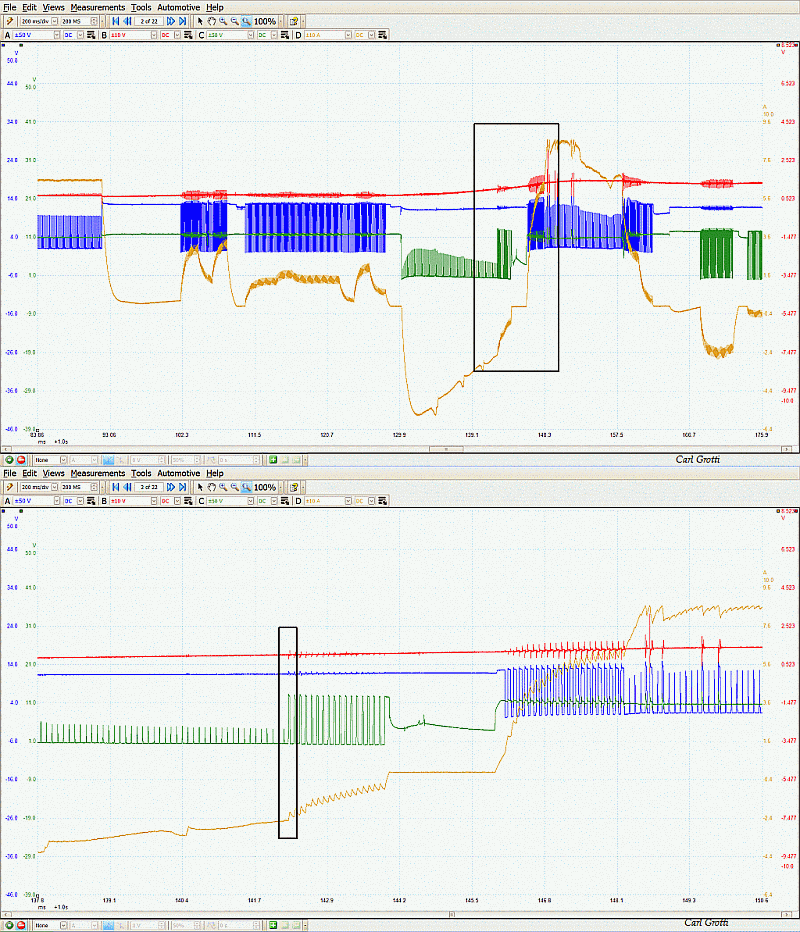
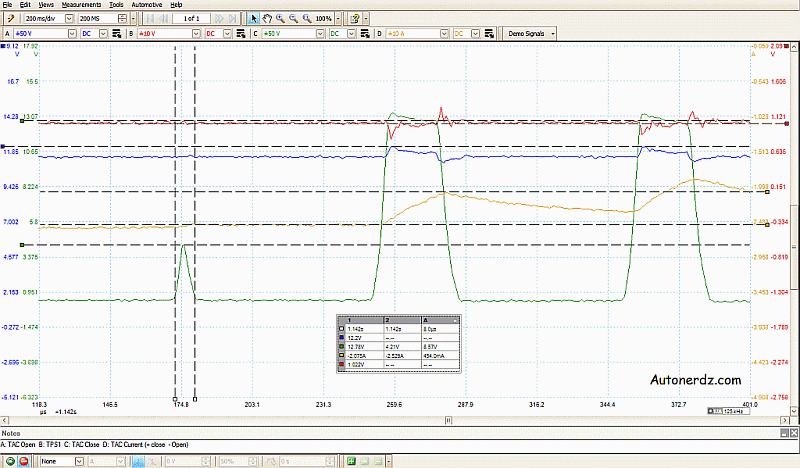
Get the idea? In that last zoom, we have measured one of the pulses at 8 microseconds (8 millionths of a second). The scope has collected 8 samples during that time for a detail in resolution never before seen in an automotive scope. These captures could not have been duplicated with any other automotive scope available anywhere.


 Home
Home

 Help
Help

 Search
Search

 Member Map
Member Map 

 Event Calendar
Event Calendar

 Register
Register

 Login
Login

 Pages: 1
Pages: 1
 Pages: 1
Pages: 1






